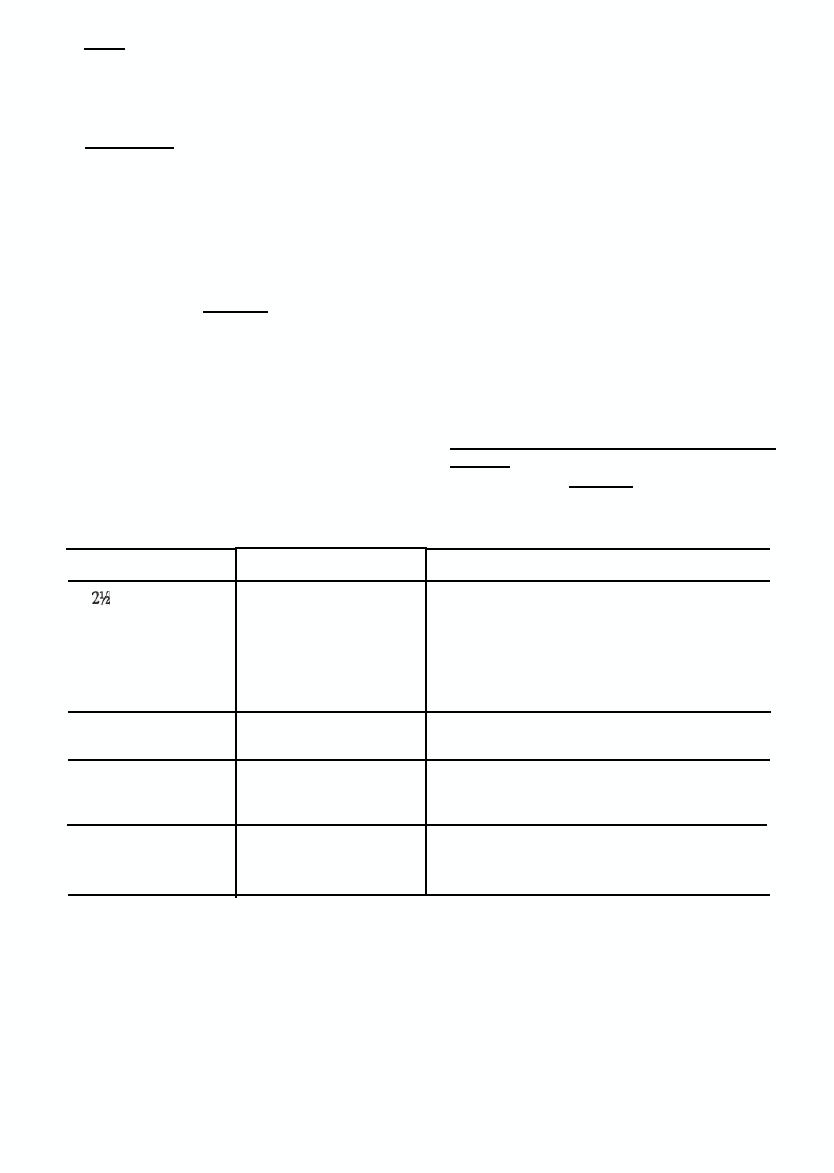
purged of polyglycol brake fluid in accordance with the
5. Safety. Normal safety precautions must be observed
following procedure:
when handling polyglycol and silicone brake fluids to
prevent eye contact or ingestion. Do not allow brake
(1) Remove gage and empty contents per para-
fluid to contaminate ground water. Spills must be
graph 6c.
soaked up with absorbent material and collected for
(2) Pour 1 pint minimum BFS into filler bleeder.
disposal.
(3) Reinstall gage, invert filler bleeder, shake
6. Requirements.
vigorously.
(4) Return filler bleeder to normal position and
a. The conversion procedures must be followed as
pressurize to 30 P.S.I., bleed at the gage and discharge
they appear in this bulletin and/or with the bleeding pro-
as much fluid as possible from the end of the hose
c e d u r e s o u t l i n e d i n t h e a p p l i c a b l e vehicle/equipment T M .
(Reference paragraph 6c).
It is important to remove as much polyglycol as possible
(5) Release pressure in the filler bleeder, remove
in order to obtain the benefits of BFS.
the gage, invert the unit to drain any remaining residual
b. The chart below outlines specific requirements
fluid out (Reference paragraph 6c).
when converting certain vehicles to BFS.
(6) Brake fluid, silicone is a bluish/purple color
and polyglycol brake fluid is a light amber color. Test
CAUTION
results have shown that some procurements of BFS will
change color under certain conditions (storage in hot
Brake shoes of any vehicle contaminated
environments (i.e., +140F or direct sunlight) for ex-
with BFS must be replaced.
tended periods of time). If a BFS container has been
previously opened (indicated by a broken seal) and the
NOTE
contents are not bluish/purple in color, discard the con-
Check master cylinder area for decal or tag
tents. A color other than bluish/purple is acceptable for
to see if vehicle was previously converted to
new containers of BFS with the seal intact.
BFS. If not, convert to BFS.
7. Pressure Bleeding Flush/Fill Method (preferred
method).
c. Purged fluids wiIl be drained into a suitable con-
CAUTION
tainer and disposed of in accordance with procedures
Do not use solvents of any type to flush
established by the local environmental control officer.
brake system.
d. The hydraulic pressure filler bleeder must be
Models/Series of Vehicle
Item
Required Action
Air/Hydraulic Unit
All
Ton Tactical Trks
1. Bleed vehicle air system prior to BFS conversion.
(M44 S e r i e s )
2. After conversion, start engine and let air pressure
return to normal. Pump brake pedal several times.
If master cylinder reservoir level goes down and no
external leaks can be found anywhere on the vehicle,
replace air/hydraulic unit.
M809, M39 Series 5 Ton
Vehicle Air Supply System
Bleed system before BFS conversion.
Tactical Trks
M561 1 - 1 / 4 T o n G A M A
Brake Drum/Shoes
If any BFS leaks from bleeder screw into brake drum,
Goat
replace brake shoes and remove all BFS from inside
drum.
All Army Vehicles
During flush and fill procedure, fluid leaking from
Master Cylinder Boot
master cylinder boot is acceptable providing fluid
leak stops when filler bleeder is disconnected.

